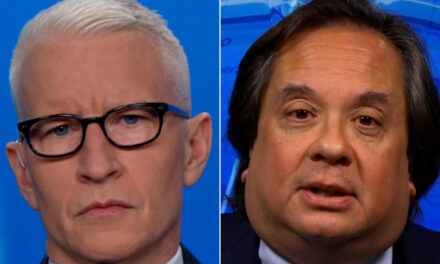
The Philips Hue Lightstrip Plus is a great way to brighten your home — if you don’t mind the price
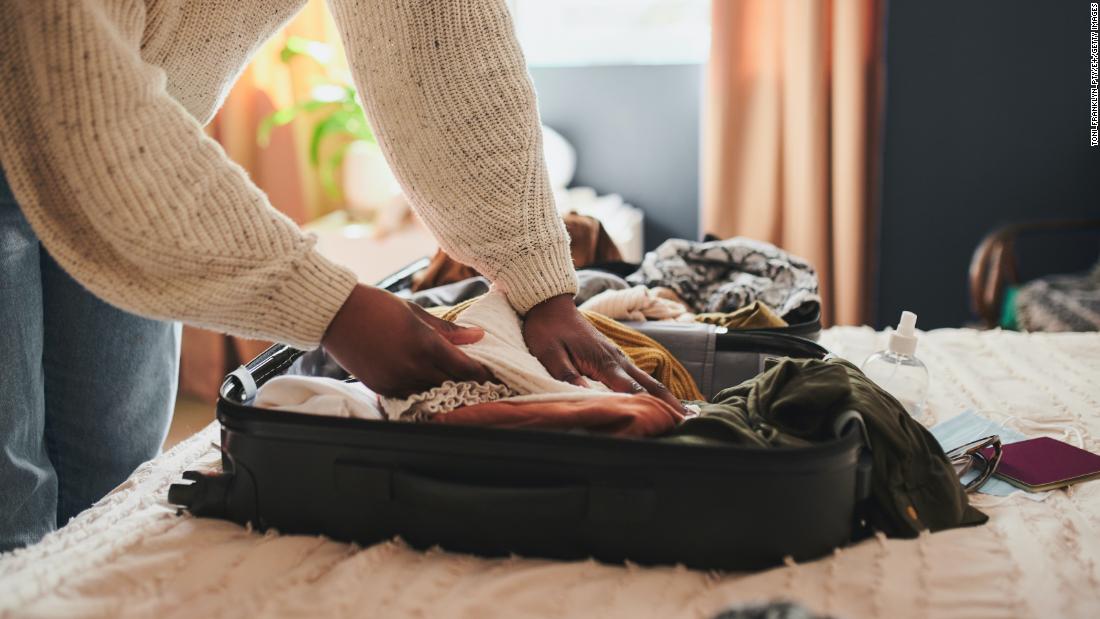
The right LED light strip can transform a dark basement playroom into a teenager’s dream den or add much needed light to a dark kitchen. And whether you’re looking to add a pop of color or just want to brighten up a room, the Philips Hue Lightstrip Plus is simple to install and easy to use, making it one of the best lightstrips you can buy.
If you’re not already familiar, LED light strips are thin, flexible circuit boards packed with small LED lights. They can be bent, cut to size and don’t require as much electricity as incandescent bulbs. You can place them under cabinets, around a window frame, on the wall, or anywhere you want to add some color and light.
For this review, I decided to install the Philips Hue Lightstrips Plus underneath my kitchen cabinets to brighten up the room. I have dark cabinets with a dark countertop and these strip lights ended up making a huge difference both in the ambience of the room as well as helping me see what I’m doing when I prep food. Plus, it was a lot less expensive than installing more overhead lighting.
I also wanted an option that was simple to use and because it works with either Bluetooth connectivity or a smart speaker, Philips’ option made sense for me. However, due to their relatively high price and the amount of add-ons necessary to make the most of them, these smart lightstrips might not be the best choice for everyone. After installing and using the Philips Hue Lightstrip Plus for the last week, here are my thoughts on what to consider before you buy.
$99.99 $94.99 at Amazon
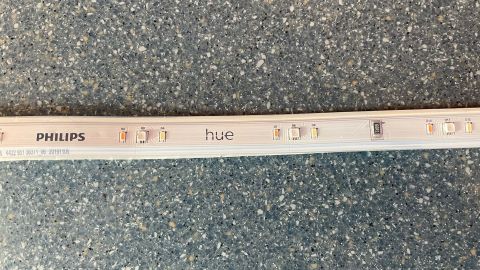
The Philips Hue Lightstrip Plus is a great way to add attractive LED lighting to your home, but for the price, it only makes sense if you already have Philips lighting and a Hue Bridge in your home. Those seeking something cheaper are better off with similar models from Govee and Wyze.
What we liked
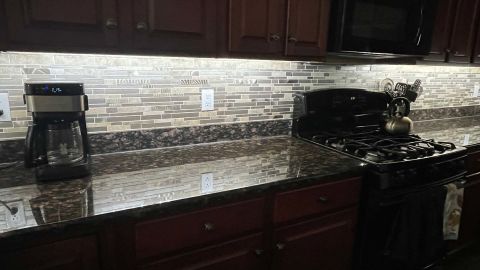
Phillips Hue bulbs are known for their high quality and bright colors, so while these light strips are on the expensive end of the spectrum compared to options like Govee and Wyze, they delivered in all the ways that count. An output of 1600 lumens makes them among the brightest light strips available, and I love that they offer a choice of a whopping 16 million colors as well as a wide range of warm to cool whites. If you’re wondering why you’d switch to whites rather than the multitude of brighter pigmentations, warm whites can present a softer look, perfect for creating a calm, relaxing atmosphere. Or you can change to a cooler tone, more like natural daylight, which you might use in the kitchen or when your kids are doing homework.
Simple set up, customizable sizing and app control
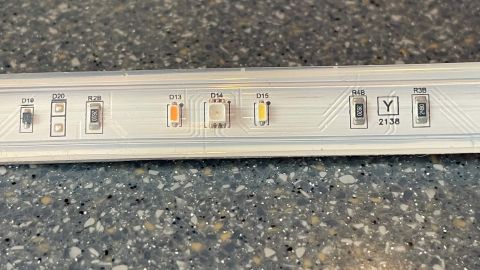
Setting up the lightstrips is extremely simple. I just plugged them in, turned them on and controlled them with the Philips Hue app (iOS or Android), which automatically detects and sets up the light strip. The lightstrip itself is 80 inches long and I especially liked the available size customization options.
For instance, if you’re looking for more light, you can add 3-foot extensions (they connect via small ports on either end) which can connect up to 32 feet in total length. If you’re on the opposite spectrum, and want a shorter strip, you can cut these with a scissor or utility knife, something not all lightstrips are capable of. Philips even has added cut mark indicators, so you know exactly where to cut to trim the excess. You should also hang on to whatever you cut off, because if you decide later to install more lights, you can connect those extraneous strips to new ones with a clamp. Philips includes one snap connector in the box, and you can buy a Philips Hue lightstrip extension pack or single, third-party connectors when needed.
Using the app, you can change the color or color temperature of your strip, set a mood, such as relaxing or energizing, or create specific scenes of your own. I tend to keep my under-cabinet light strips on either an energizing white light, which I often dim, or use one of the Hue app preset scenes with a purplish hue, like Spring Blossom or Crocus. Be warned: you may find yourself spending a lot of time tapping on different scenes in the app to see which ones you like. When you find one, save it to your “my scenes” screen so you change the mood with just a tap.
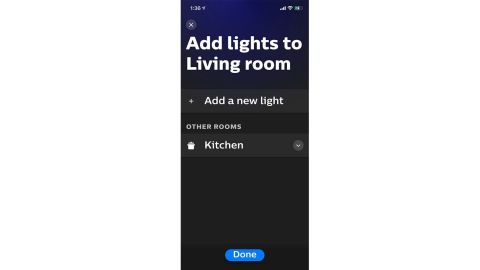
I also really like how easy it is to shape and mold these strips. They fit well under cabinets, along baseboards and can bend easily to round a curve. I ran them starting with the far left corner of the cabinet and thought I might have to cut and clamp in order to make the 90-degree angle. But, thankfully, they were so flexible that no cutting was needed.
If you were to use them along stairs or a more visible area where you need to make a right angle, Philips suggests using corner connectors which are L-shaped. These connect two pieces of LED strips, giving a cleaner, more flush look, rather than just bending the lights around the angle.
A sticky installation
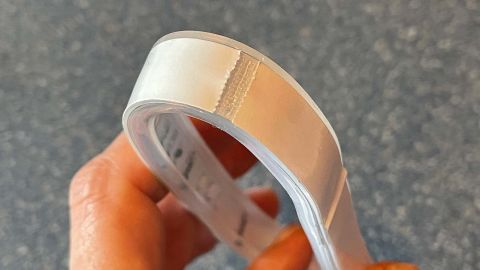
Installing the Philips Hue Lightstrips couldn’t be simpler. Just set them in place and peel off the adhesive backing as you press down firmly to attach it. The small, manageable adhesive strips along the back are a nice touch since you don’t have far to go if you need to shift things a bit. However, you will need an electrical outlet nearby for powering the lightstrip, so keep that in mind when deciding where to place them.
You can use Philips Lightstrips anywhere there is a flat surface to attach them to. For instance, you can run them underneath a child’s bed so soft light reflects down onto the floor. Or under shelving to spotlight items or or add a bit of color. Running them behind a TV could also help create an immersive home theater experience.
There are a couple of ways you can choose to control the light strips. First is simply through the Philips Hue Bluetooth app. The app is well thought out and easy to use, and if you always have your phone with you, it works just fine. You need to be in Bluetooth range, which is generally about 30 feet, and you can connect and control up to 10 different lights.
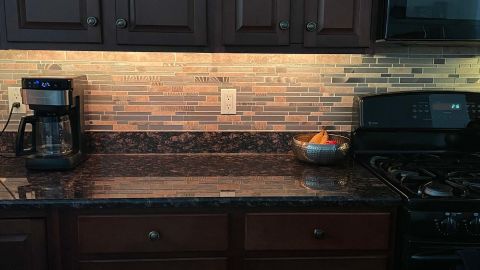
Another way is voice control if you have an Amazon Alexa or Google Assistant smart speaker, which uses Zigbee wireless technology. I much prefer this option because I have a few Amazon Alexa devices in my home, including one right in the kitchen. It’s so much easier than finding my phone, opening the app and making a selection. To do this, just open the Alexa app, search for the “Hue” skill and select the Enable Skill button. Add your Hue credentials to connect your account to Alexa. Once connected, you can use commands like “Alexa, turn on/off the kitchen cabinet lights.”
Related: The best smart bulbs you can buy now
You won’t be able to control scenes or change light colors using your voice unless you have or add on a $59 Philips Wi-Fi-enabled Hue Bridge, which is the hub for the entire Philips Hue ecosystem and which I use to control all my Philips smart lights. You’ll get tons more functionality out of Lightstrip Plus using this setup, which you can buy separately or in one of the popular Hue Starter Kits. With a bridge, you can ask Alexa to make your lights brighter, or warmer, or change them to a specific color or scene. In addition, it lets you do things like schedule the lightstrip to turn on and off at set times, create scenes in specific rooms while you’re away from home, and control up to 50 lights using either the Hue app or Alexa, Google or the Apple Homekit.
Having a bridge and other accessories, like the Philips Hue Play HDMI Sync box, enables even more smarts. My favorite party trick is the ability to sync the Striplights to music or TV using the Hue Sync app. The lighting reacts to what’s taking place on screen and will change, dim or flash along with the scene or to the beat of the music. Imagine the colors on the wall behind the TV changing in conjunction with the on-screen action — it’s all as simple as adding lights around the back of your TV and connecting the TV to the Sync Box.
Gamers will also love this feature as Sync reacts to what’s going on in the game, whether the lights are around the computer or the desk.
What we didn’t like
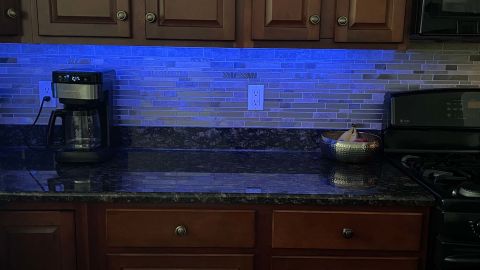
Because the Philips Hue Lightstrip Plus is limited to one color at a time, you can’t change the color of individual sections. So, if you switch to a specific color or scene, each bulb will turn that color. If you’re looking for a lightstrip that can display multiple colors at the same time, check out the pricier Philips Hue Gradient Lightstrip.
As feature-packed as these lightstrips are, they’re expensive compared to similar products from Govee and Wyze. With that in mind, we’re not sure it makes sense to buy a Lightstrip unless you think you’ll be adding onto it in the future.
A Bridge, which adds $59 to the expense, is necessary if you want to access all the features like automating your lights, syncing with entertainment and the ability to control them when you’re not at home. You can also add on a motion sensor or a Hue dimmer switch to create a truly easy-to-use ecosystem, but those items add up quickly.
Bottom line
I love the Philips Hue Lightstrip Plus: it looks great, it’s easy to use and has tons of useful features. But for the price, it only makes sense if you already have Philips lighting and a Hue Bridge in your smart home. Adding on the Bridge, which unlocks the Lightstrip Plus full potential, significantly increases the cost. If you don’t use them with a Bridge, you’re not getting what you’re paying for.
Source: https://www.cnn.com/cnn-underscored/reviews/philips-hue-lightstrip-plus?iid=CNNUnderscoredHPcontainer

















